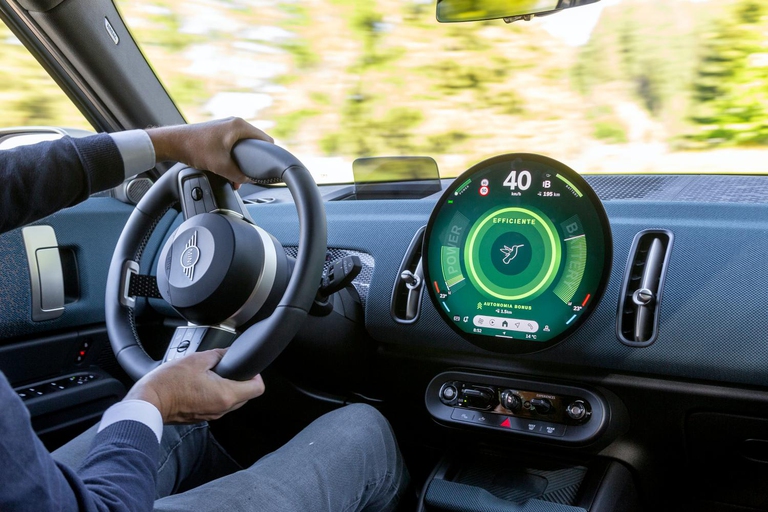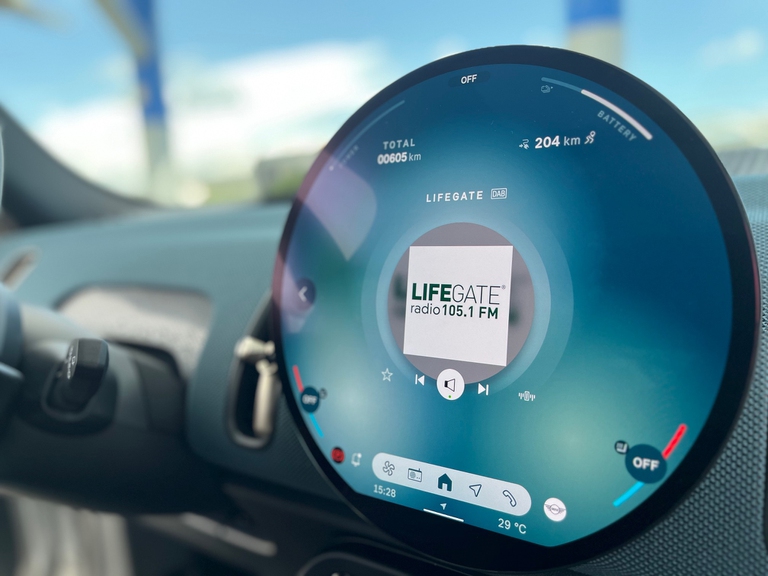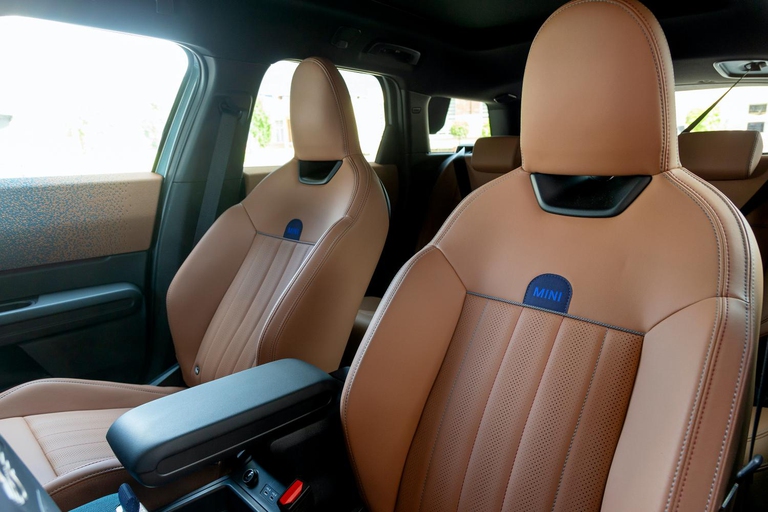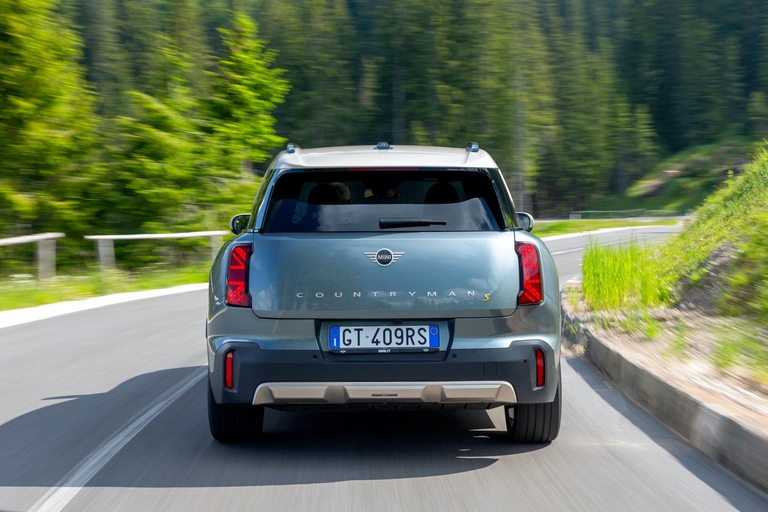https://www.lifegate.it/auto-elettriche-mini-rilancia-la-countryman-mai-cosi-grande
- |
“Higher, longer, more Mini”.Will be.This is how a note from the brand describes the new one Countryman, always the largest of the Minis, now also electric (by 2030 all the brand's models will be electric only).This is it the largest Mini in history, the one which, to be clear, at least in the intentions of the manufacturer (BMW) aspires to the role of the only family car, the one for home-work and for weekend trips.Light years away from that first Mini drawn on a napkin by Alec Issigonis and has become an icon of swinging London of the Sixties (but this version didn't even exist then, the first dates back to 2010), today the dimensions in the evolution of the car (even the electric one...) they matter more and more.
In this specific case it is a notable leap beyond 6 centimeters more in height, up to 13 in length.The wheelbase also increases, i.e. the space between the front wheels and the rear wheels, this is an objective advantage for habitability, even if the platform is not yet "native electric" and also forms the basis for the endothermic versions which remain on the list.To clarify, the new Mini Countryman is now 4.43 meters long, thus fully entering the so-called C segment of SUVs and crossovers, even in June (data Unrae) among the favorites of Italians with the 18.5 percent of market share, with electric ones rising to8.3 share thanks to the effect of incentives.Whether it is evolution (more space for passengers) or involution (less space for citizens...) we will understand later, together.
For the first time the Mini Countryman is (also) electric
Now let's stick to the facts.Starting from the most important, namely that the Countryman is available for the first time in an electric version (in the past two generations there have been hybrid variants).Four setups and two “All electric” versions:there Countryman E front-wheel drive with a power of 150 kW (204 of the "old" horsepower) and a (declared) range of 462 kilometers and Countryman SE ALL4 which has 230 kW (313 horsepower) with a slightly lower range, i.e. 433 kilometres.The 66.45 kWh battery with 400 V architecture is unique. The prices? Starting from 40,700 euros.
As for the evolution of design, as always we leave every consideration to you.The Mini Countryman has certainly changed a lot, generally today it is more imposing, ever closer to the typical crossover canons, as if to underline the propensity for adventure and free time, both aspects made more authentic by the 4x4 electric version, which combines silence and the absence of local emissions with greater safety on low-grip terrain;speaking of adventure, among the optional accessories of the electric Countryman there is also the retractable tow hook (it is retractable with electric drive), which allows you to tow up to 1,600 kilos.Imposition, as was said above, which has not prevented this maxi-Mini from becoming more efficient, thanks to better aerodynamics, an aspect which on an electric vehicle has even more importance in terms of efficiency and autonomy.

From Green mode to go-kart feeling, the opposites of the Countryman
Let's get on board now.For those who are not familiar with the model, it is surprising not to have any instruments (or displays as happens more and more often) in front of the steering wheel.As happens on the "normal" Mini, here too information such as speed is projected on the head-up display (among the options), a retractable screen positioned on the dashboard, between the road and the driver, so to speak.However, the eye immediately turns to the large circular display in the center of the dashboard, slightly off-centre from the driver's view but accessible and visible to all passengers.
It's about a 24 centimeter Oled display in diameter which effectively contains all the on-board functions.Not always intuitive (at least not in the short time of our test), things improve if you learn to use voice commands;the voice assistant here is called Hey Mini! And it solves quite a few problems.A little crowded with information, from here you can control speed, electric range, battery status, navigator, telephone, climate, connectivity.In short, everything.The funny thing is that the same information can be displayed in many different styles that can also be associated with different driving styles, such as eco (Green fashion) or sports;the “vintage” one is also fun (it's called Timeless) which replicates the graphics and colors of the Minis of the Seventies.There are also many possibilities to vary the lights and sounds on board.

The electric Countryman seen from inside
If space has grown outside it has also grown inside, elementary Watson!you will say (but not always obvious).So thehabitability of the Mini Countryman is truly that of a family car, perhaps a "contemporary" family, like 2+1 so to speak, where the space remains good even for any luggage, convenient to load thanks to the electric tailgate.The fabrics are pleasant (on some versions made in recycled polyester, such as the inside of the doors, the floor and the carpets), leather is animal free, the finishes are refined, with some plastic details that can be improved.The panoramic glass roof illuminates and, once opened, allows you to enjoy the silence, perhaps in nature, preferably at low speed.Even better if, in the meantime, the function is activated seat massage.

From (real) autonomy to the (electrifying) effects of driving
And now we come to some considerations on the use of the electric Mini Countryman, in our case the "basic" Countryman E version, the front-wheel drive one, the one 204 horsepower of power and also the one with the greatest autonomy, 462 kilometers (at least on paper).Always a bit rigid about bumps (on the other hand the so-called go-kart feeling in addition to the fun - a lot of it, especially around the bends - it also has some negative effects on comfort), the Countryman E entertains and reassures.Let's explain better.Power and comfort have reached an optimal point of balance and if the increased dimensions cause some problems in the city, when traveling they provide the advantage of unexpected habitability.
Let's start with the most efficient driving mode, the Green fashion.In this case the power is limited, the accelerator response is softer and more progressive.All for the benefit of greater efficiency and maximum possible autonomy.Unfortunately, our test drive took place largely on motorway sections, as is known, the most treacherous terrain for the electric car due to the limited possibility of regenerating energy.The result is an autonomy that realistically in combined use is around 380 kilometers, which is certainly destined to improve if the urban mix is increased.

Size, parking and charging times
While driving the electric Countryman you can appreciate the numerous driving assistance systems, from the adaptive cruise control which regulates speed and braking based on traffic, to the lane control (which acts on the steering wheel) to more advanced systems (many for a fee, however) like the one that checks, before changing lanes, that the conditions exist (see adequate space) to move.To return to the initial dilemma, the larger size doesn't help in the city, nor in the skimpy seventies garages, but for the lazy there is automatic parking:you take your hands off the steering wheel, your feet off the pedals and voilà, the car does everything by itself.Even better, you get out of the car and controlled by your smartphone the car enters the car parks on its own.While for those who suffer from charging anxiety, once the destination has been chosen, the navigator also calculates any stops necessary to recharge.
As for charging, the battery of the electric Countryman accepts alternating current up to 22 kW and, for fast direct current charging, up to 130 kW, which translated into times means that in the best of situations in about half an hour we start again after reaching 80 percent of autonomy.The situation is different when reloading from normal home network where they can serve even more than 30 hours, which drop to the more acceptable 7 with 11 kW.





